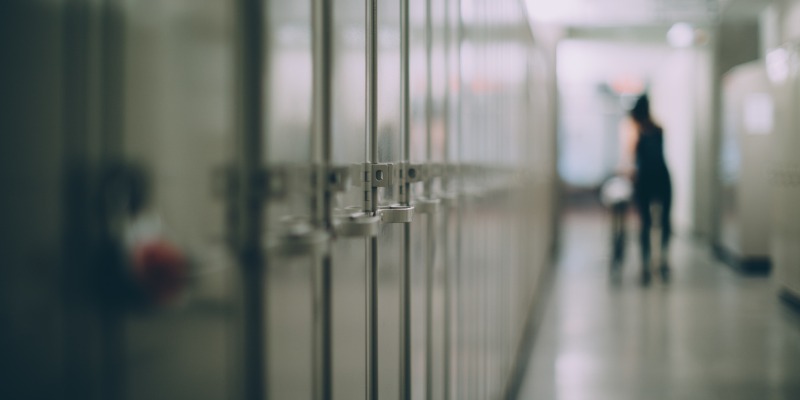Public High School Violence in Canada
"Nobody's speaking about this violent assault. I'm in shock.""He'd been punched and kneed in the face and the head. There's people walking by totally indifferent.""[It's the silence of the adults that's most upsetting] They're complicit in the attitude that you don't talk about traumatic experiences."Sarah Murray, mother, Nepean High School student, Ottawa"Soft-on-consequences discipline, a critical factor contributing to unruly] student behaviour [driving fellow teachers to quit the classroom and proving to be] terrible for teachers.""While most discussion about student behaviour ... focuses on its impact upon students, too often the effects on teachers are simply overlooked.""They're collateral damage that rarely gets a mention [as articulated by American teacher Daniel Buck, Thomas B. Fordham Institute commentary].""[And here in Canada], trauma informed [education philosophy and practice makes it harder to openly address such incidents in class with teens or in meeting with their parents]."Paul W. Bennett, Ed.D., director, Schoolhouse Institute, Adjunct Professor of Education, Saint Mary's University, National Coordinator for research.ED in Canada
 | |
| Nightmares. Frequent tears. Fear of going to school. London Free Press |
Sarah Murray, the woman quoted above, became aware of the "culture of silence" practised in schools resulting from violence occurring there. Her son while in a school washroom was beaten, the event posted on social media, despite which local Ottawa school officials managed to hush it up. Increasingly it is not the presence of guns that is troubling in Canadian schools. Rather, in the 4,700 public schools with high school programs, it is fists and knives that dominate as a violent threat.
During the school closures of the first several years of the pandemic, there was a downturn in school violence. With the resumption of in-person classes, teachers and school principals throughout Canada -- like their counterparts in the United States -- are now reporting higher levels of violence, misbehaviour, assault and drug abuse.
The recent lunchtime episode involving a Grade 10 boy at Weston Collegiate in Toronto shot in the chest and left in critical condition, was an isolated event, making national headlines. Such events in Canada, unlike the United States, remain relatively rare. What has worsened is regular and ongoing violence in and around schools, post-COVID. Ontario high school teachers' union president Karen Littlewood brought attention to this social dilemma by calling for help from provincial and local authorities to ensure schools and classrooms be safe.
The advocacy voice for 55,000 educators in hundreds of high schools, Ms. Littleowod expressed alarm, both for the well-being and security of students, but as well for the safety of teachers, mental health support personnel, child and youth workers. She reported widespread disturbances in the passage of the school disruptions by COVID-19: "These incidents were happening across the province, and it's now reached crisis level".
 |
| Taza DeLuna was attacked at school in Collingwood, Ont., in September 2017. His injuries were so severe that he had to be hospitalized. (Caitlin Taylor/CBC) |
As an astonishing symbol of the prevalence of violence in schools, 622 young people between ages 12 and 29 were victims of stabbings between January of 2021 and November 2022. Alarmed classroom teachers speak up out-of-school. The National Education Association, amid fears of a national teacher shortage in the U.S. claims half of all American teachers report considering or actively planning to leave teaching as a result of deteriorating school climate and safety. Canada has not yet reached that crisis point.
"Biting, kicking and verbal abuse" are reportedly so prevalent in Manitoba schools that the provincial Workplace Safety and Health Department classified schools recently as a "high-risk industry", along with foundries, sawmills and demolition sites. Entitled "Time-loss claims in public school districts", a 2021 Work Safe BC online report documented 16,812 claims by teachers, teaching assistants and administrators between 2011 and 2020. In January 2022 the Halifax Chronicle-Herald revealed that 11,240 violent incidents were reported in the 2020/2021 school year.
The education system is in a parlous state. Violence has become common in classrooms, hallways, fields, and parking lots. There are so many instances of disturbances, low-level disruptions and verbal abuse they are unreported often out of fear of reprisals or in recognition of the near-absence of disciplinary consequences. Privacy protocols are held to a strict code preventing victims from being identified in reports naming perpetrators. No established reporting standards have been established for teacher documentation.
And on the home-and-health front, many Canadian parents, health professionals and child psychologists harbour doubts whether school situations can offer safe, secure and healthy schools. While acknowledging the important role that schools can play in students' access to food and other needs, many parents and child experts objected strongly to the portrayal of schools [as] safe spaces. And they won't until bullying is brought under control.
In senior grades in particular violence, bullying, sexual harassment, racial incidents and negative mental health experiences have become common for students, teachers and education workers.
 |
| How much academic learning happens when you feel unsafe? If you are like most people, the answer is “not much. Fraser Institute |
Labels: Canada, Consequences, Discipline, School Violence, United States

0 Comments:
Post a Comment
<< Home